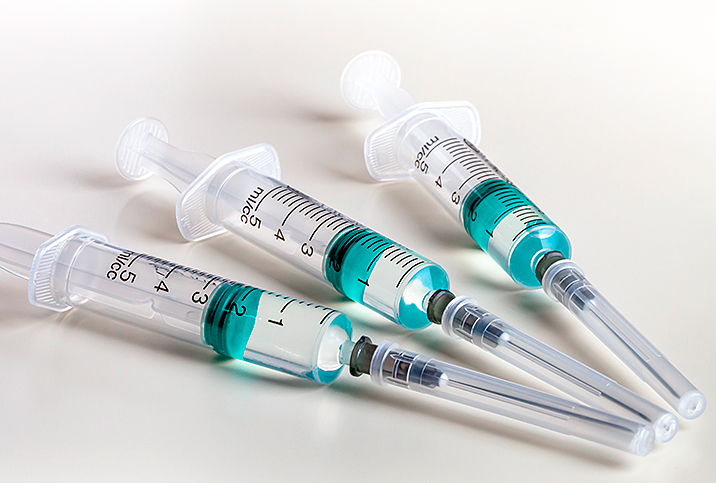OPCs Can Mitigate the Overdose Crisis and Curb Rising HIV Rates

Since the inception of overdose prevention centers (OPCs), no fatal overdose has been recorded at one. Also called supervised drug consumption facilities, or safe injection or safe use sites, OPCs are new to the United States but have existed throughout Europe for the last three decades, the first one opening in Switzerland in 1986. Other countries that support and operate OPCs include Australia and Canada.
The United States absolutely has a need for this kind of facility. In the 12-month period ending in April 2021, an estimated 100,306 people died of a drug overdose, a 28.5 percent increase from the prior year. Synthetic opioids such as fentanyl, which is 50 times more potent than heroin, are the primary driver of overdose deaths. According to the Centers for Disease Control and Prevention (CDC), 72.9 percent of opioid-involved overdose deaths involved synthetic opioids.
Overdose prevention centers are part of an evidence-based harm-reduction framework. In short, they seek to minimize the health consequences of drug use and meet people where they are, without judgment. Currently, only two OPCs operate in the U.S., both located in New York and run by the nonprofit OnPoint NYC. Federal law poses a legal challenge to opening more.
Ronda B. Goldfein, Esq., is the executive director of the AIDS Law Project of Pennsylvania and the vice president of Safehouse, an OPC that planned to open in Philadelphia in 2019 but was barred by a federal court that ruled it would violate federal law.
"The federal U.S. drug law known as the Controlled Substances Act has a section colloquially referred to as the crack house statute," Goldfein explained. "Under this law, it is illegal to maintain drug-involved premises for the purpose of sale, transfer, storage, distribution or use of controlled substances. We have maintained that our intended purposes are not prohibited by the law but the threat of federal prosecution has loomed large for many years."
What happens at a safe injection site?
Overdose prevention centers do not supply illegal drugs and cannot legally supervise injections. However, medically trained staff are equipped nearby with naloxone (Narcan), a lifesaving medication that can reverse the effects of opioid overdoses. OPCs provide sterile syringes, clean pipes, mouthpieces and other supplies, and dispose of the supplies safely.
The medical staff at these centers offer ways to test for fentanyl so visitors can find out if their drugs contain fentanyl before they take them. Prescription fentanyl is typically used to treat patients with severe pain. Fentanyl that is illegally manufactured is dangerous because it's made without the quality controls of pharmaceutical-grade fentanyl, and may be mixed with other drugs, such as heroin, cocaine, methamphetamine and MDMA, making less powerful drugs fatally potent.
Other resources, such as addiction counseling or treatment, are also available.
"OPCs also provide our communities with a roof over their head from weather and other things they may go through in the streets," said Jose Martinez, a harm reduction and hepatitis C associate at the National Harm Reduction Coalition in New York.
While opponents of overdose protection sites argue they increase public drug use in their neighborhoods, research indicates the contrary. A 2014 study in Drug and Alcohol Dependence sought to gather and synthesize evidence from 75 articles for centers in Australia and Canada. The authors found that OPCs' existence did not enhance drug use or drug trafficking in their neighborhoods. In fact, they were instead found to be associated with reduced levels of public drug injections and dropped syringes.
OPCs and overdoses
In New York City, more than 2,300 people suffered fatal overdoses during the 12-month period ending in March 2021, amounting to approximately six deaths each day. A feasibility study conducted by the NYC Health Department in 2021 indicated that overdose protection centers in New York could save "up to 130 lives a year."
Goldfein noted the positive effects on overdoses in the vicinity of OPCs, too. One study showed that overdose deaths decreased substantially for people who lived within 500 meters of a center in Vancouver, British Columbia.
"Peer navigators and medically trained staff are on-site to offer linkages to behavior and physical health needs," Goldfein explained.
Narcan restores breathing and saves lives and, therefore, its availability is a crucial part of curbing the overdose crisis, but it's not always readily available to someone suffering from addiction. At overdose protection centers, it is available, and more importantly, medical staff are able to administer the medication properly and monitor for breathing changes or other physical signs of a potential overdose.
Safe injection sites can reduce HIV rates
Clean and safe supplies are an effective way to help curb HIV transmission. Mathematical modeling published in the International Journal of Drug Policy indicated a safe injection site can likely prevent four to eight cases of HIV transmission a year. (Earlier—much criticized—estimates put that number as high as 57.)
"Along with sterile and safe supplies, OPCs also provide participants with services like mental health support, hepatitis treatment and Ryan White services," Martinez said. Ryan White services, named after a 13-year-old who acquired HIV through a blood transfusion, are a federal program that provides HIV support and services for those who are underinsured or uninsured.
"People affected by hepatitis C or HIV or any other disease can all be reached in one place," Martinez added. "It's common for OPCs to have clinics inside of them, so all they have to do is wait until the person takes care of their business and then walk them upstairs."
In 2017, the U.S. Department of Health and Human Services declared the overdose crisis a public health emergency. Curbing the crisis will require a multipronged approach that includes harm reduction and evidence-based treatment. So far, the research to support OPCs' positive effects on the overdose crisis and HIV transmission is well-founded.
"No one initiative will end the epidemic, but we need approaches that reduce stigma and save lives," Goldfein said.
The harm-reduction approach may be foundational.
"Helping people stay alive is key to creating change," Martinez said.


















